Snipe Hunt
QUESTION 1:
On the ride home from Hudson Canyon, we found this guy in the fish box along with mahi and yellowfin. Could it be a juvenile billfish? Or some sort of pipefish?
Chris Darrah, Mechanicsville, Pennsylvania
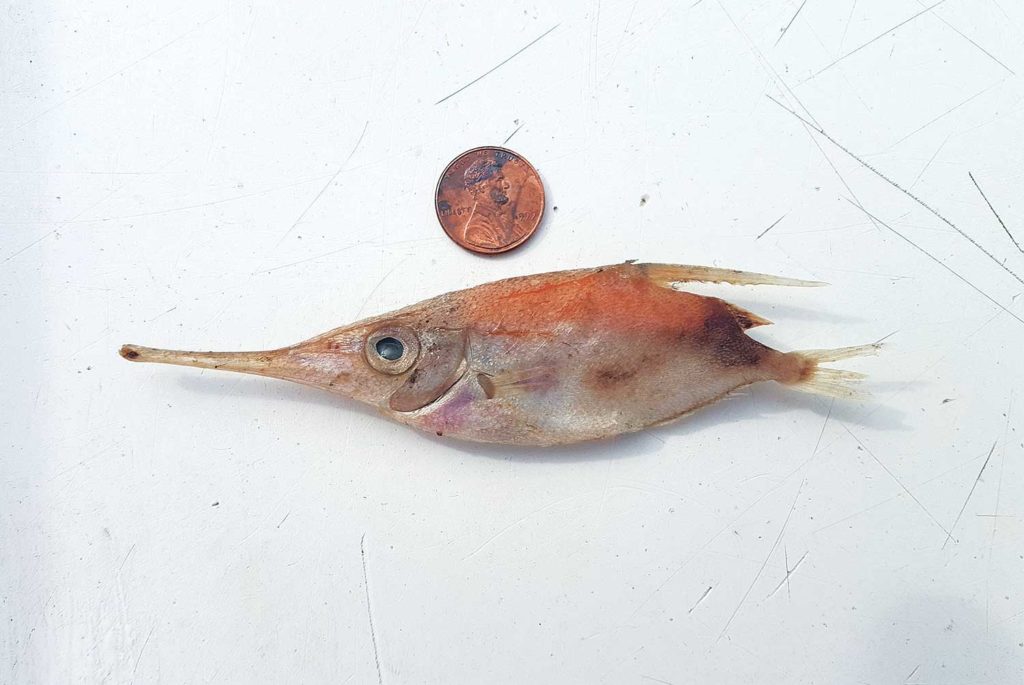
QUESTION 2:
I was fishing for squid near Southern California’s Catalina Island with a Hydro Glow in the water to draw up the squid. This little guy showed up; we netted it, took a couple of photos and let him go. What might it be?
Erik Anthony, Brea, California
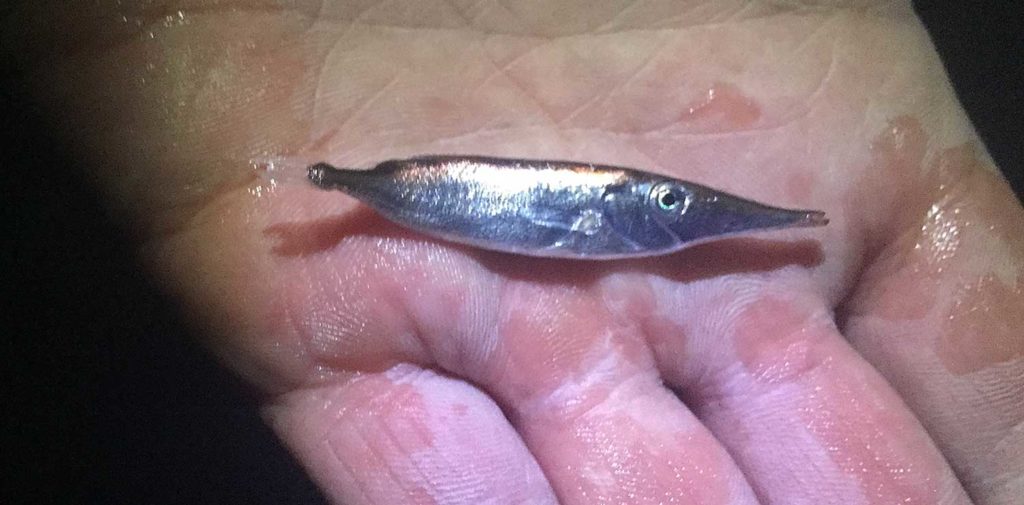
ANSWER:
These cute little cartoonish guys are longspine snipefish, Macroramphosus scolopax. Longspines are found throughout the world (on the Pacific Coast as far north as Southern California) from the surface waters to depths of almost 2,000 feet. At one time it was thought Atlantic and Pacific snipefish were different species, but it appears now that there is only M. scolopax. When folks do see them, it can be in schools of thousands. The snipefish is a small species, reaching maybe 9 inches long and living to perhaps six years, so you are probably holding an adult fish. When in the water column, they eat plankton; when rooting around in sandy seafloors, they prey on shrimp and other crustaceans. In turn, a wide range of fish eats them. Parenthetically, I had not heard that they were attracted to lights, so that is pretty cool.
— Milton Love
Brilliant Solution
QUESTION:
While jigging north of Sabah, Malaysia, at Royal Charlotte Reef along a steep ledge where it dropped from about 200 feet to at least 750 feet, we caught this. I felt a bump at around 190 feet, but I kept letting out line. When I engaged the reel’s spool, the bait was down at around 300 feet. I suddenly felt tension and hooked this fish. But — what is it?
Wing Chong
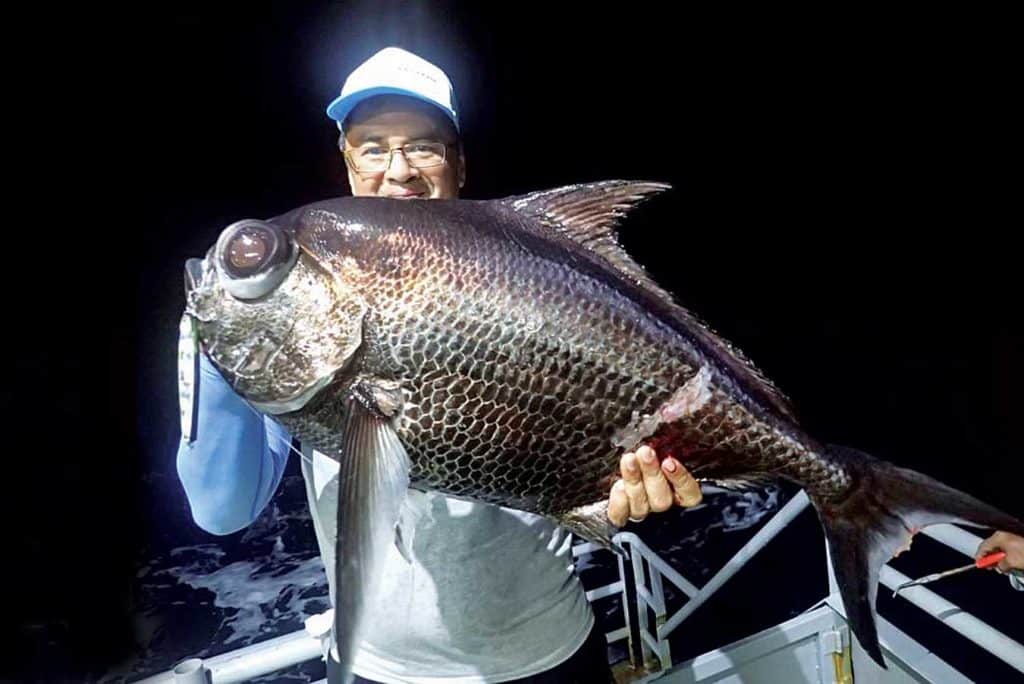
ANSWER:
That fairly sizable beast is called a brilliant pomfret (Eumegistus illustris). Also known as lustrous pomfret (or monchong in Hawaii), this species is known to occur along reef drop-offs in waters as deep as 1,500 or more feet throughout the tropical Pacific and Western Indian oceans. University of Hawaii fish guru Jack Randall reports that brilliant pomfret grow to a maximum length of over 31 inches, and the world-record weight is 17 pounds, taken off Kona, Hawaii, in 2005. Your fish was taken in water relatively shallow for the species; as other pomfrets in the family Bramidae, E. illustris are usually encountered between 900 and 1,200 feet, where they’re most often taken on tuna longlines or deep bottom drops. They feed mainly at night on a diet of squid, crustaceans and smaller fishes, and are reputed to be excellent eating, with a high oil content.
— Ben Diggles
Whippersnapper Warsaw
QUESTION:
This grouper was caught aboard my boat in about 80 feet of water. We were fishing off the Alabama coast, near Orange Beach. It would have weighed between 5 and 10 pounds. No one I’ve shown the picture to can ID it.
Laura Pearce
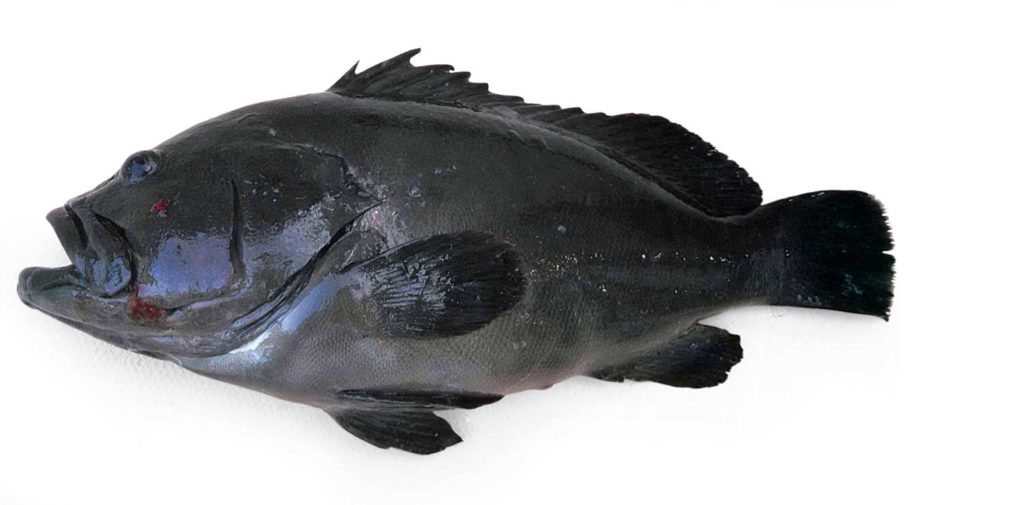
ANSWER:
Laura, that handsome fish is a juvenile Warsaw grouper, Epinephelus nigritus. A couple of key characteristics that give the ID away are visible in the photo, starting with the color. Juvenile Warsaws, like many groupers, sport colors as juveniles quite different from their adult colors: Adults are tan or brown, while juvies are black with a few small white spots. The very young ones also have a saddle pattern on their back, just in front of the tail fin (caudal peduncle). But your catch has outgrown that. Also, characteristic of Warsaws, the second dorsal spine is the longest, and the tail fin has a squared-off margin.
Warsaws get really big, sometimes well over 500 pounds. They favor deeper water, to depths of 1,000 feet, around rocky bottoms. But juveniles, like this one, are often found shallower. Warsaws range from Massachusetts to Brazil but favor continental waters, and are rare or absent from islands. The young are sometimes confused with juvenile snowy grouper, but the latter have much more distinctive white spots, arranged in neat rows.
A number of years ago, I witnessed the catch of a Warsaw of nearly 400 pounds. In its jaws were 13 abandoned hooks, the evidence of many battles won.
— Bob Shipp
The Fish Who Shall Not Be Named
QUESTION:
I was deep-drop fishing off Tokyo and caught this little guy in about 2,000 feet of water. It’s about 8 inches; I’ve never seen one more than 10 inches. Their very tasty white meat is excellent for sashimi or in a stewed broth. We often catch them with golden-eye snapper and Sebastes matsuarae (I can’t find an English name for either). My best guess is Hozukiu embremarius. If not, what is this, and what is it called (in English)?
Ralph Nunez, Tokyo, Japan
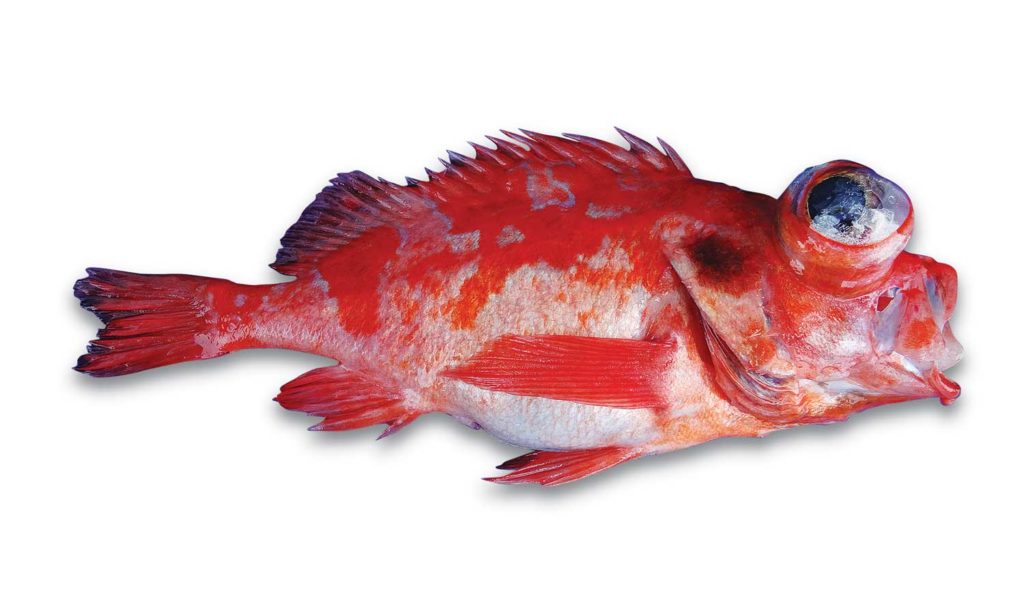
ANSWER:
When I first saw your photograph, Ralph, I was reasonably sure your fish was a species of rockfish, genus Sebastes. Unfortunately, about 30 species of rockfishes live in the northwestern Pacific, and most of them inhabit the waters off Japan. There’s no guide to these fishes (either published or Web-based), and some “species” actually turn out to be composed of two or three unrecognized species. So, I did what any good biologist would do, I punted, and emailed Makoto Okamoto, a fish expert in Japan.
It turns out that your fish is a newly described deepwater species (recognized in 2004) called Sebastes kiyomatsui. It has no English name, but if you want to impress your fishing buddies in Japan, call it by its Japanese name Kataboshi-aka-mebaru. A good way to tell this species from other local rockfishes is the black blotch on the cheek and the irregular crimson blotches on the body. By the way, the largest Kataboshi known appears to be about 10 inches long, so you are catching maximum-size fish.
— Milton Love
If Looks Could Killifish
QUESTION:
I caught this little fish in brackish shallow water in Charleston, South Carolina, using a very small fly. Although I know what this is and catch it often, it has always stumped my friends. Can your experts identify this fish?
Jason A. Schall, Charleston, South Carolina
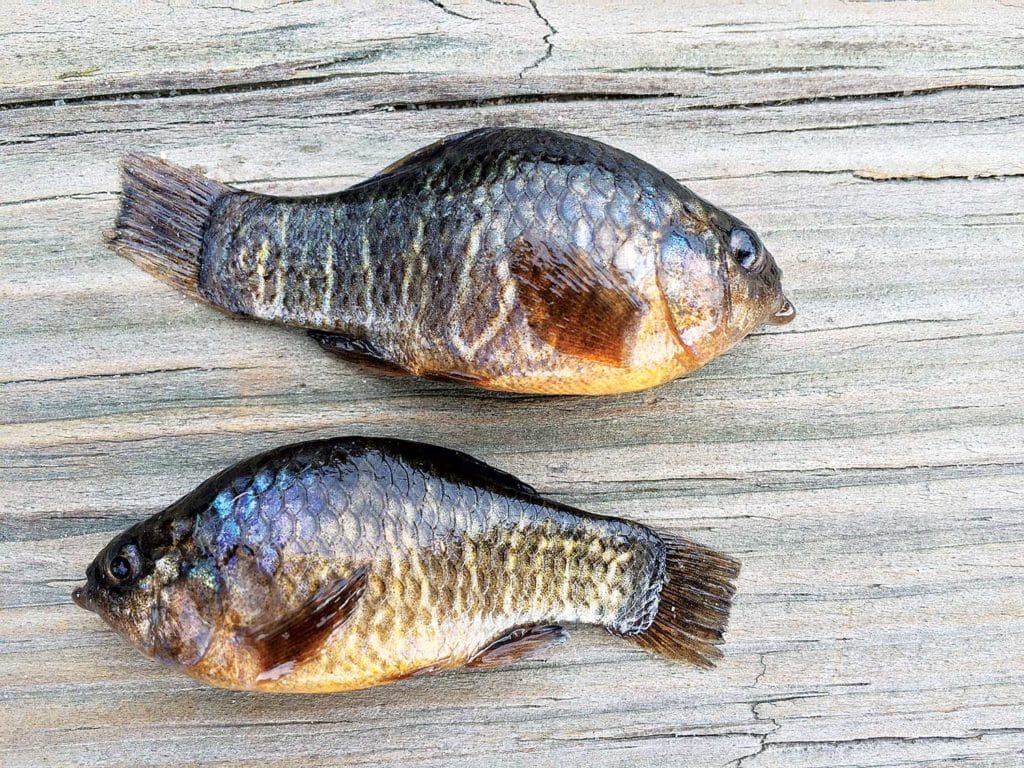
ANSWER:
Jason, the fish you caught is a sheepshead minnow, Cyprinodon variegatus. This widely distributed species ranges from Massachusetts to northern Mexico and along a portion of the northern coast of South America; it’s also found in the West Indies. The sheepshead minnow is mainly a coastal species, though it also occurs in some freshwater rivers and lakes, reaching about 3 inches in length. Some ichthyologists call members of the family Cyprinodontidae — which includes fishes belonging to the genus Cyprinodon — “pupfishes.” They place killifishes in a separate, closely related family: Fundulidae. However, many others continue to include members of Fundulus and Cyprinodon together in the family Cyprinodontidae, and refer to all members of this family as killifishes, despite differences in their common names. Given the confusion surrounding the sheepshead minnow’s systematic classification, I’d be very hesitant to state that it’s not a killifish.








